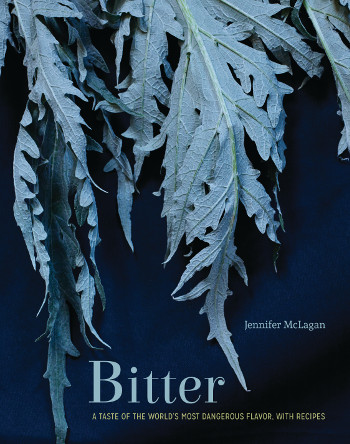Bitter: Author Jennifer McLagan Discusses the Science Behind the Taste
Photo via Flickr/ realitysadream Food FeaturesRecently, the James Beard Foundation announced the winners of their 2015 awards, and Jennifer McLagan’s Bitter: A Taste of the World’s Most Dangerous Flavor, with Recipes won for best single-subject cookbook.
The timing couldn’t be more natural. Bitter flavor is having a moment. Like all of McLagan’s past books, Bitter takes us on a delicious, fact-filled journey—this time, to wrestle bitter flavors into more palatable dishes, even when your crowd might be on the bitter-averse side. Sharing a bit of history and a lot of knowledge, the book aims to showcase how delightful and healthful bitter flavors can be, ranging from grapefruit to beer to coffee and chocolate.
Last summer, I was introduced to McLagan, a noted Canadian chef and cookbook author based out of Toronto. On-site during the culinary event Savour Stratford, she presented a Tutored Talk titled “Out and About with Bitters.” However, the chat went one step beyond book promotion. As McLagan presented to the small crowd, she gave an educated insight into the once-overlooked taste of bitter—a taste that goes beyond cocktails.
With the major taste groups listed as sour, sweet, salty, umami and bitter, why do some people react more adversely to bitter foods than others? During her session, McLagan administered what is known as the PTC taste test —a genetics test to find out who could be deemed a supertaster. “Genetics are playing a role in how we taste foods,” McLagan says. “The synthetic chemical denatonium, which has a taste index of 1,000, is the most bitter substance. This chemical can make us more sensitive to certain tastes.” Supertasters have a heightened sense of taste and bitter food items (like arugula or black coffee) can be quite bitter to a supertaster. Approximately 25 percent of the population are supertasters, followed by medium tasters at about 50 percent and the rest (25 percent) are non tasters. “With age, we lose taste buds,” McLagan says. “What we also need to realize is that taste is created in our brains and we have the ability to override that.”

Ava Brackett
More times than not, we rely on our other senses to fill in the blanks of how something will taste. “Sight is one of the biggest things we don’t think about,” McLagan says. “When we observe red food items, our brain tells us this item will be sweet. Heston Blumenthal has created several dishes that have tricked our senses.” Take for example, his beetroot and orange jellies, created to look sweet but taste otherwise. Because of how our other senses influence our perception of what we eat, terms like taste and flavor can oftentimes become blurred. The gustatory system, located in the mouth, determines taste, whereas flavor is determined by taste and smell. What our bodies have done is create a taste profile (through sight or smell) in our minds without even realizing it. “The biggest misconception people have is that bitter is going to taste bitter. Bitter isn’t the first flavor that one should get,” McLagan says.
It’s human nature to innately dislike bitter-tasting substances, presumably because most bitter compounds are toxic. The one thing that McLagan suggests is that parents indulge in more bitter eats during pregnancy. “Children and babies have more taste buds. It has been shown that kids will become more receptive to bitter food flavors if they have been passed along from their mother’s diet.” Studies have shown that a mother’s dietary food choices during pregnancy can be transmitted via amniotic fluid, and therefore the baby will have a greater acceptance and enjoyment of particular foods.
In ancient Europe, tradition has shown that so-called “digestive bitters” were used to encourage digestion, whereas in Chinese culture it is ideal to ingest one bitter food with each meal. “Bitter foods are an appetite stimulant,” McLagan says, “but also have been used to stimulate the digestive system.” But the benefits of bitter are more than just that. Research has indicated that bitter foods can help keep sugar levels under control while cleansing the body, which is why more diabetic diets are including bitter food items. Some studies have also claimed that bitter foods could help with purifying the blood and liver cleansing.

Rob Fiocca
Although it may not sound like the most enticing craze, bitter has globally been named to be a 2015 food trend. Although we have long used bitters in cocktails, bitter greens—along with bitter chocolates, coffees, and beers—are now being introduced to savory dishes, or simply enjoyed on their own. McLagan reflects, “I never thought of bitter as a trend, I just thought bitter foods were interesting.” Not one to speculate how trends start, she believes that more young chefs are finding a long-term appreciation and understanding of bitter foods and cocktails through the depth and complexity of what those flavors hold.
So what exactly is bitter’s biggest drawing power? For starters, out of all the taste groups, bitter is probably the most interesting, as it’s the one people agree on the least. But for McLagan, she’s just happy to start an open dialogue about what bitter is. “We need bitterness in our lives,” she says, and after everything her book shares, I couldn’t agree more.
Amanda (Ama) Scriver is a full-time community builder and official ‘head bee in charge’ of the food, fat and feminism blog, Fat Girl Food Squad. When she isn’t busy kickin’ ass and takin’ names, she is having serious feels for all things coffee, hip-hop, the art of drag, Kardashians, pizza and Doritos. You can find more bylines from her at Eater, BizBash and Toronto is Awesome. Follow her on Twitter: @amapod.